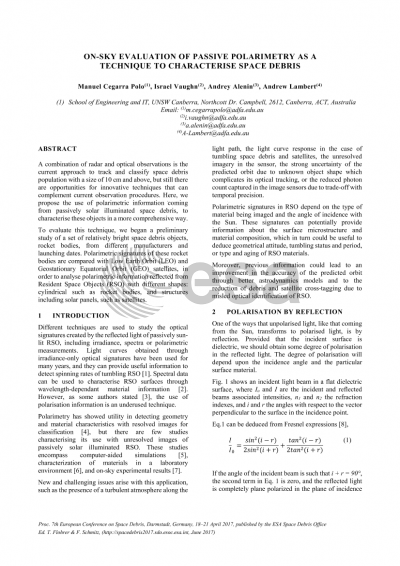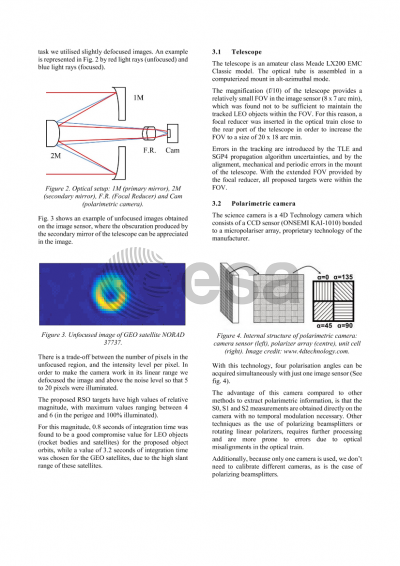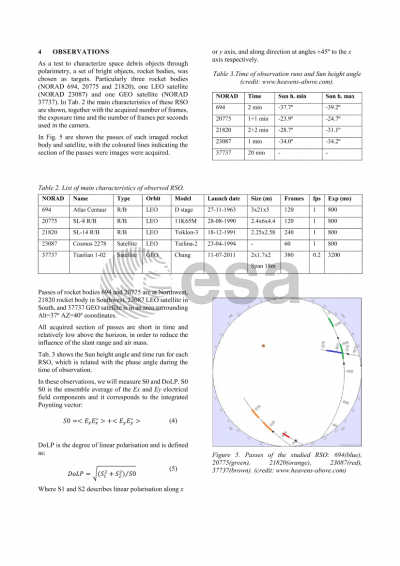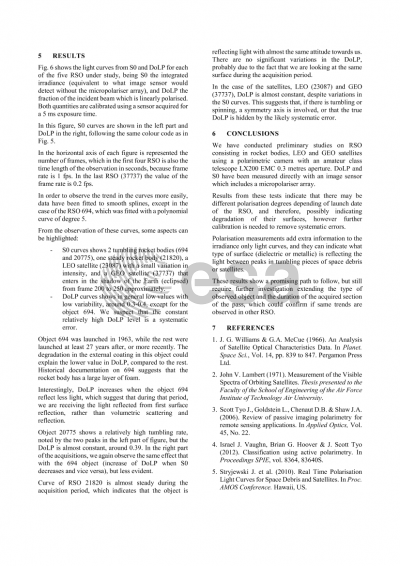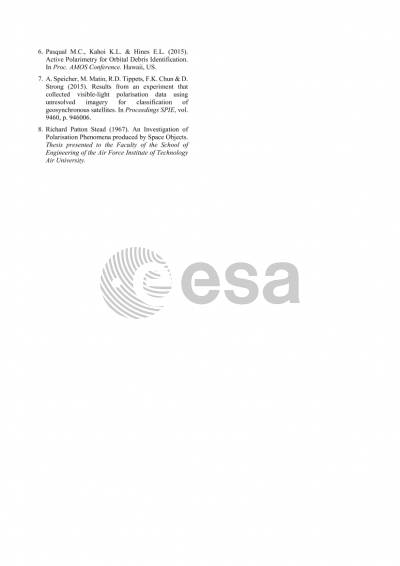Document details

Abstract
A combination of radar and optical observations is the current approach to track and classify space debris population with a size of 10 cm and above, but still there are opportunities for innovative techniques that can complement current observation procedures. Here, we propose the use of polarimetric information coming from passively solar illuminated space debris, combined with irradiance only measurements, to characterise these objects in a more comprehensive way.
Polarimetry has showed utility in detecting geometry and material characteristics with resolved images, but there are a few studies characterising its use with passively solar illuminated Resident Space Objects (RSO). New and challenging issues arise with this application, such as the presence of a turbulence atmosphere along the light path, the light curve response in the case of tumbling space debris, the unresolved imagery in the sensor, the strong uncertainty of the predicted orbit due to unknown object shape which complicates its optical tracking, or the reduced photon count captured in the image sensors due to trade-off with temporal precision.
Polarimetric signatures depend on the type of material being imaged and the angle of incidence with the Sun. Polarimetric imaging can provide information on surface microstructure and relative material composition. Combining polarimetric data with irradiance only measurements at coincident times allows for possible inference of useful information to detect debris geometrical attitude, tumbling status and period, size or type of material, which could impact the accuracy of its predicted orbit.
The Space Team at UNSW Canberra have recently developed capabilities to detect and track objects in LEO as small as 10 cm (such as 1U CubeSat’s) with moderate size telescopes (0.3 metres in diameter). We have conducted preliminary studies on RSO in geostationary orbit using simultaneous polarimetric and irradiance measurements. We have developed a novel observational setup to obtain these signatures, which is based on the acquisition of combined observations of the same geostationary satellite from two different telescopes separated 1 km from each other, simultaneously measuring polarized light at different angles at one location and irradiance only at the other location, with less than 1 ms delay between observations. We have successfully inferred Stokes parameters, S1, S2 and Degree of Linear Polarization (DoLP) of a set of single and co-located geostationary satellites as a function of time, and compared with the irradiance only measurements S0. Results from these tests show different polarization signatures S1 and S2 for co-located satellites and also that these signatures are not correlated with S0 measurements, which validates its combined use to detect object distinct features. These results show a promising path to follow, but still require further investigation to confirm this technique as a classification tool for geosynchronous satellites.
With this acquired knowledge and experience, and with further investigation through modelling and observation into the space environmental effects on awkwardly shaped object in LEO, we are extending this technique for space debris objects as small as 10 cm, and we expect to obtain preliminary results for real on-sky observations during the first half of 2017.
Preview
